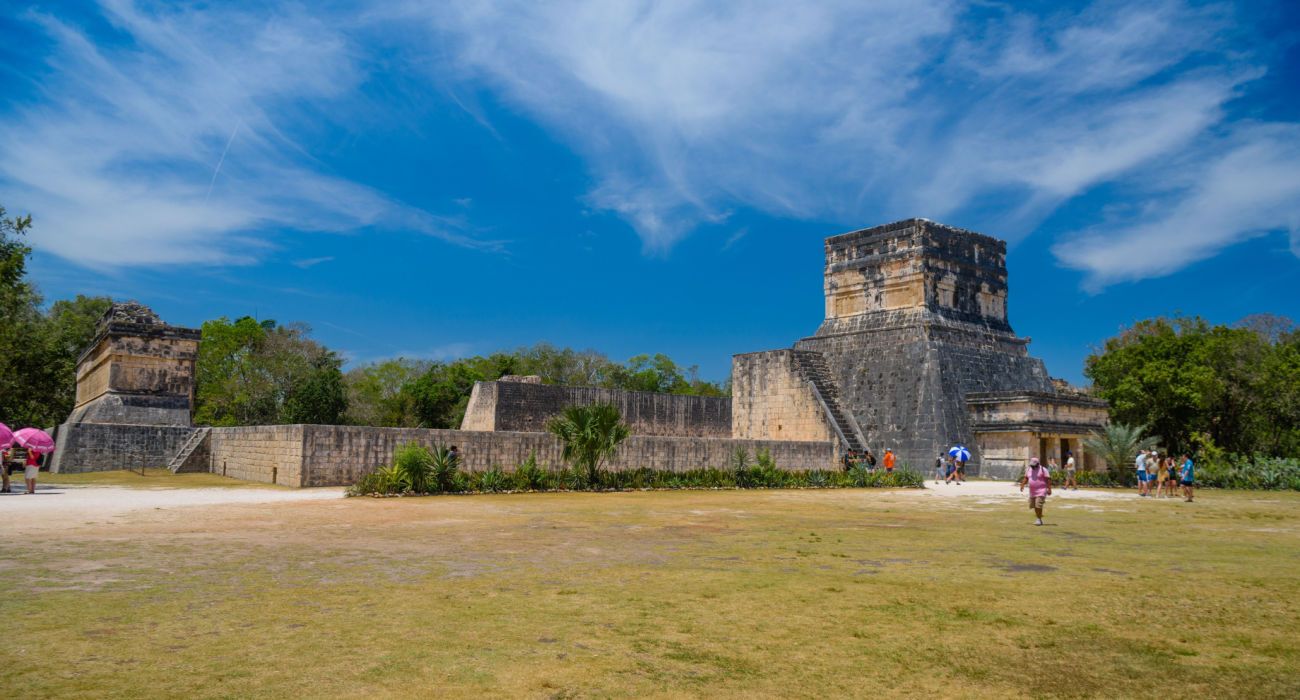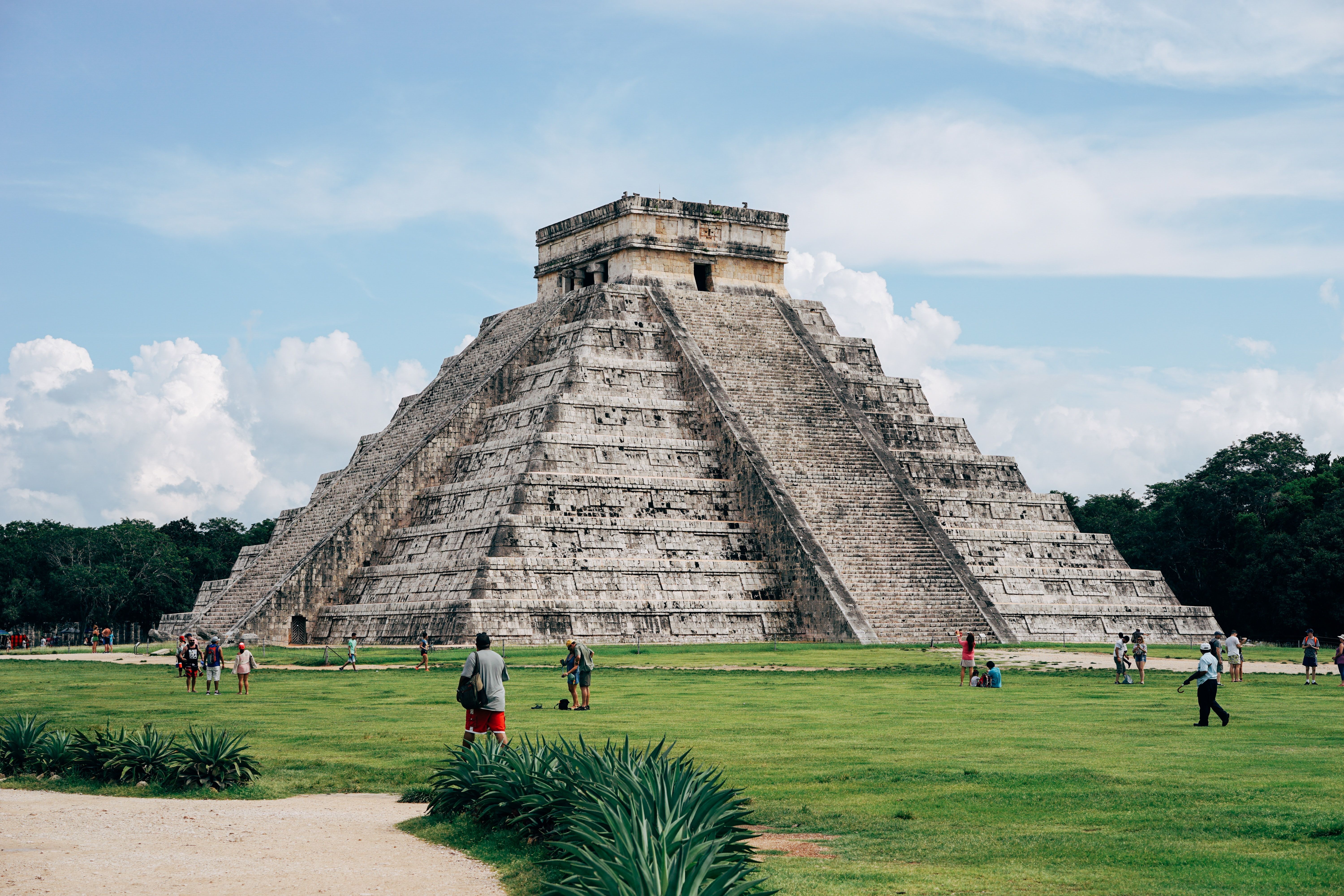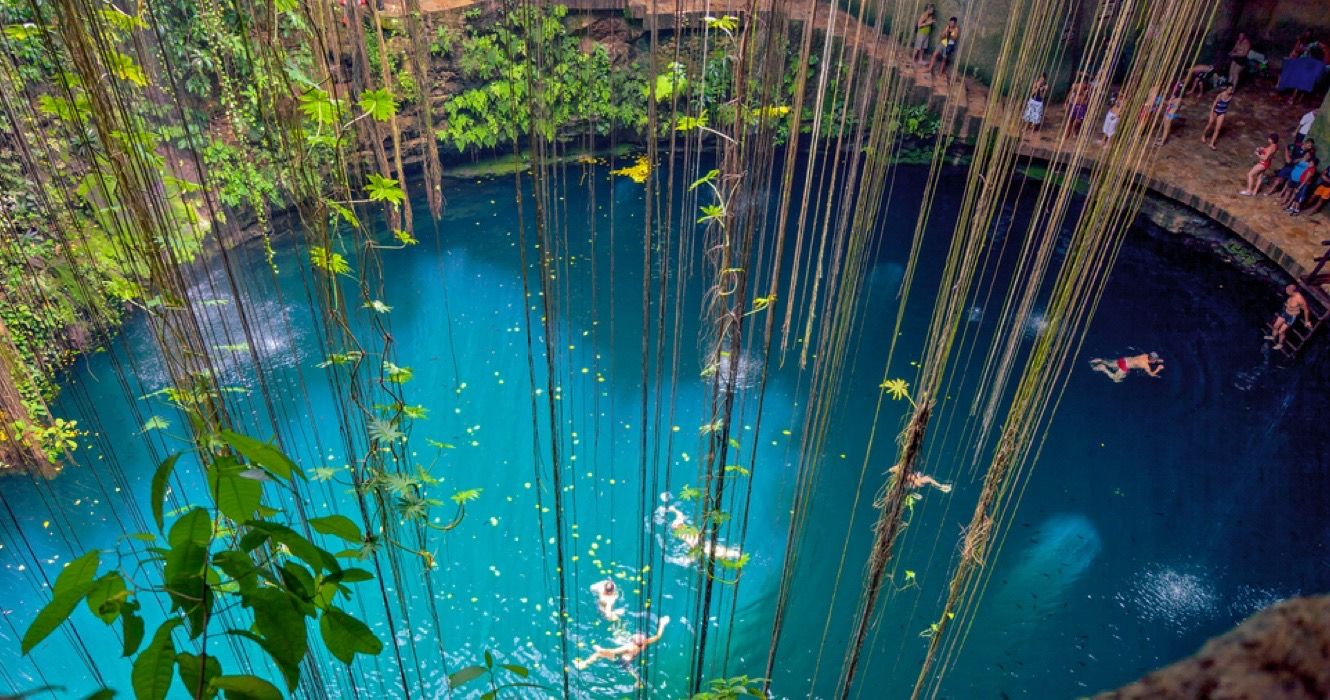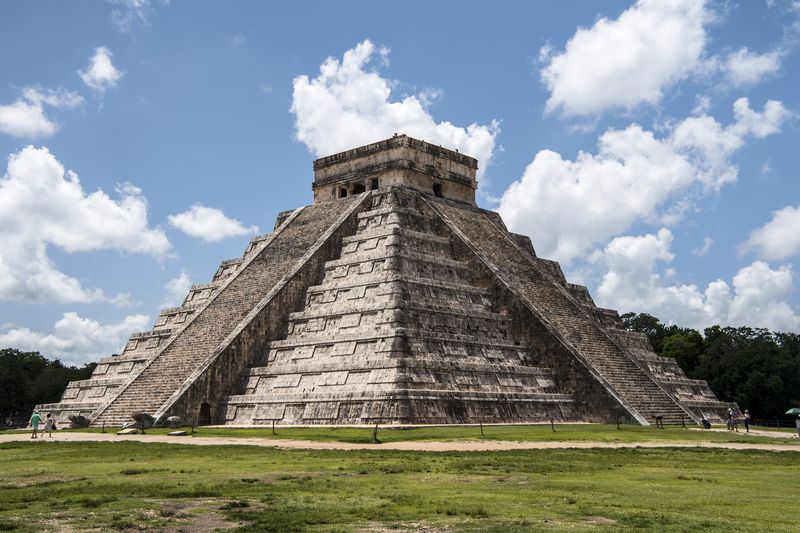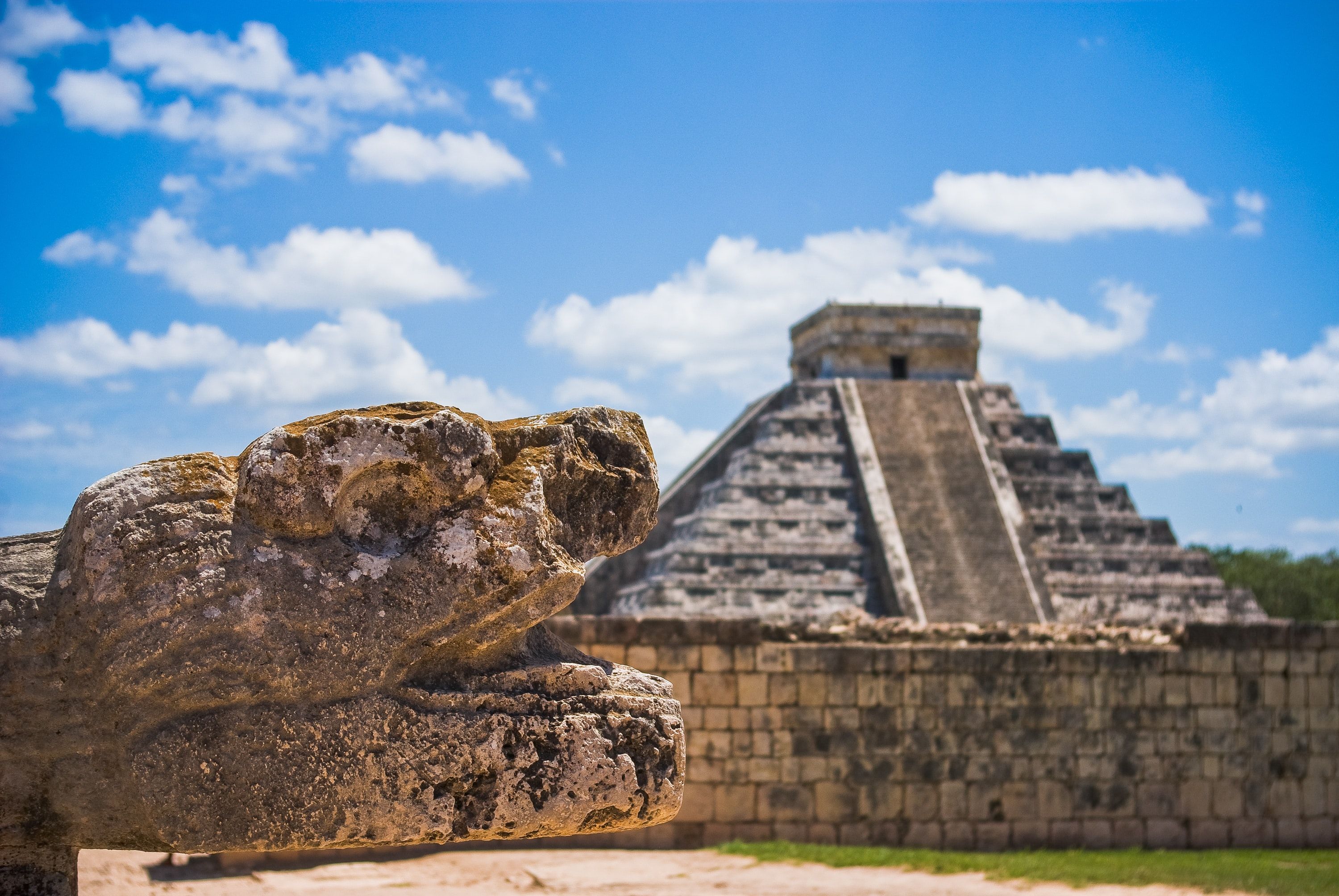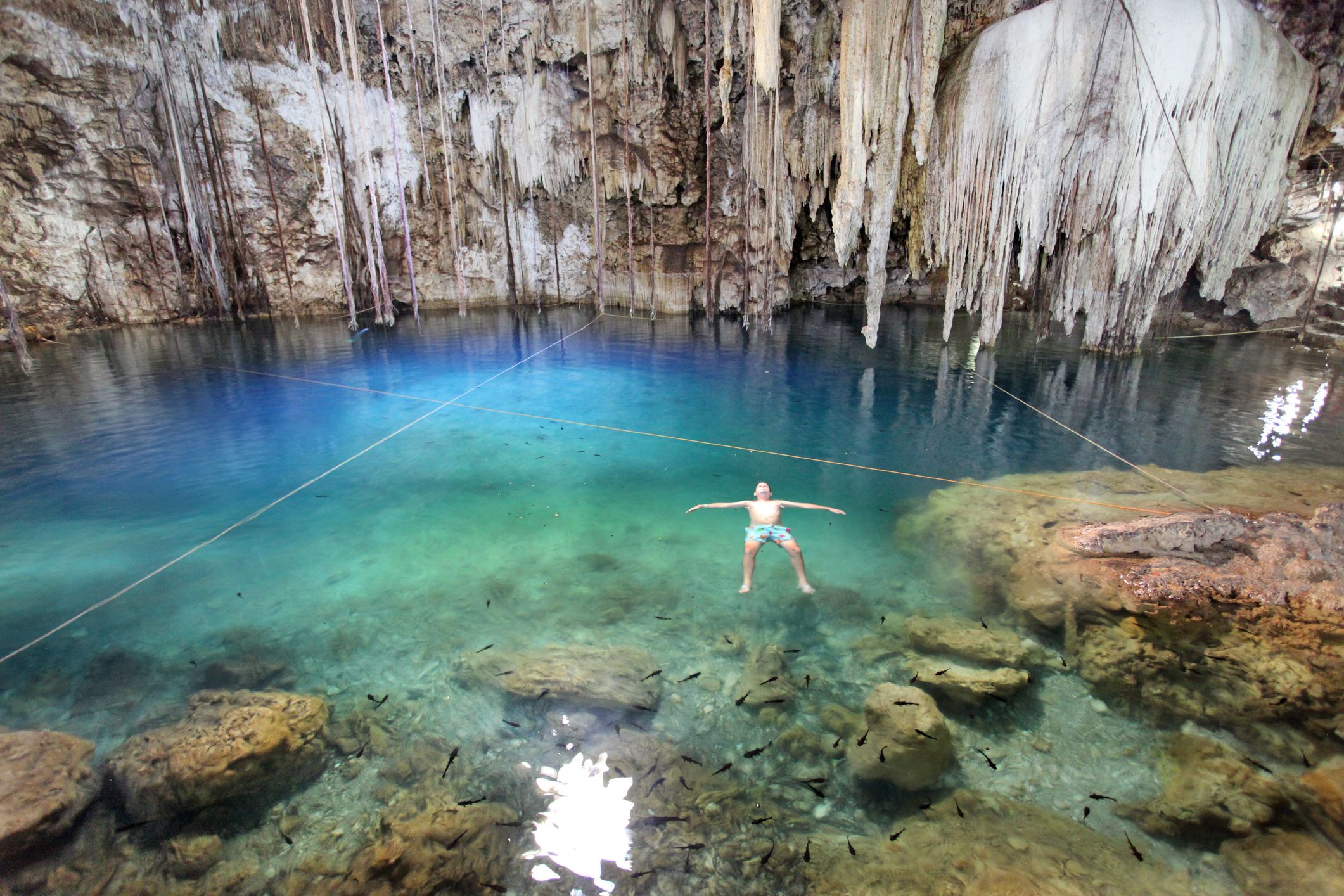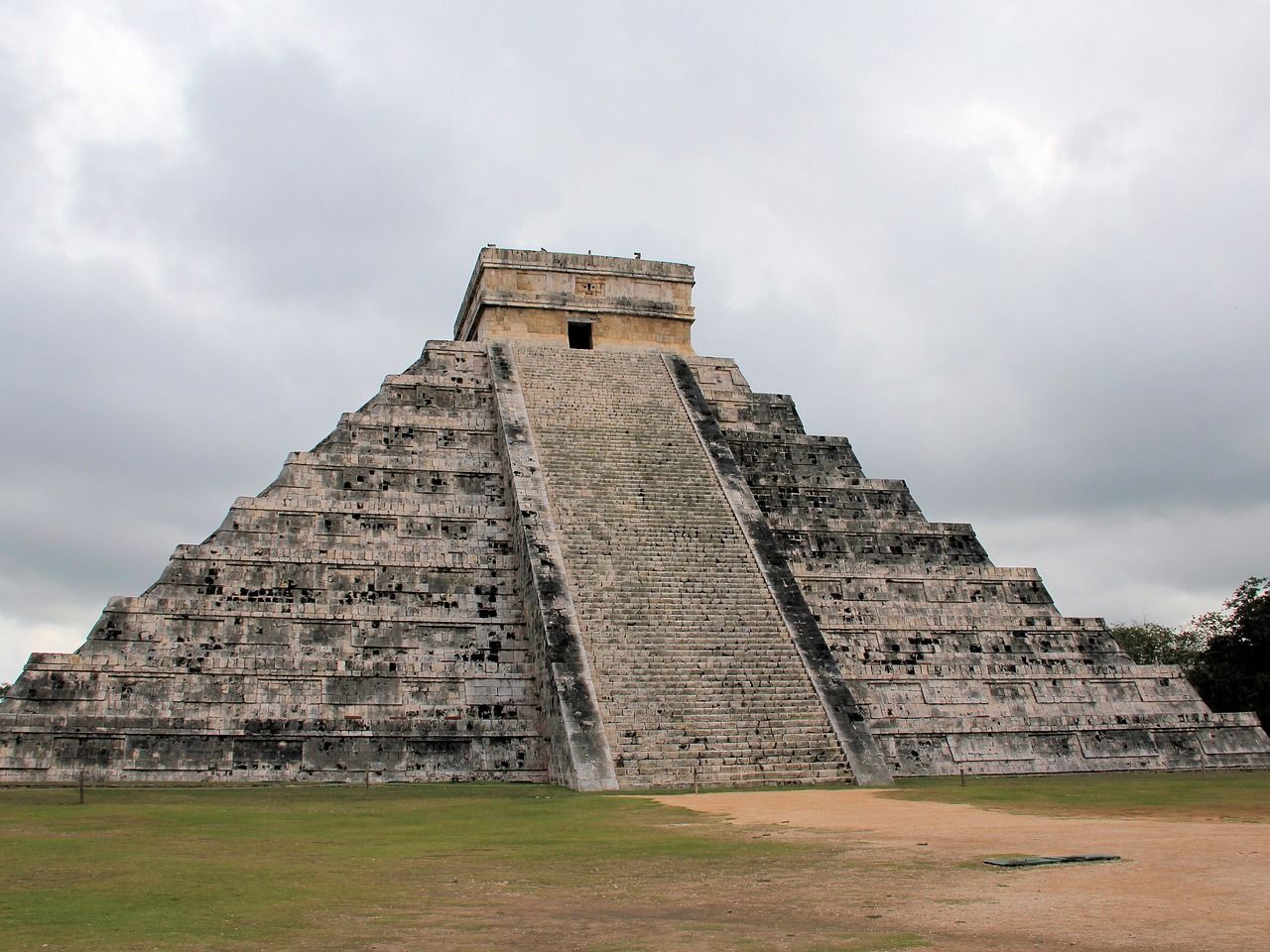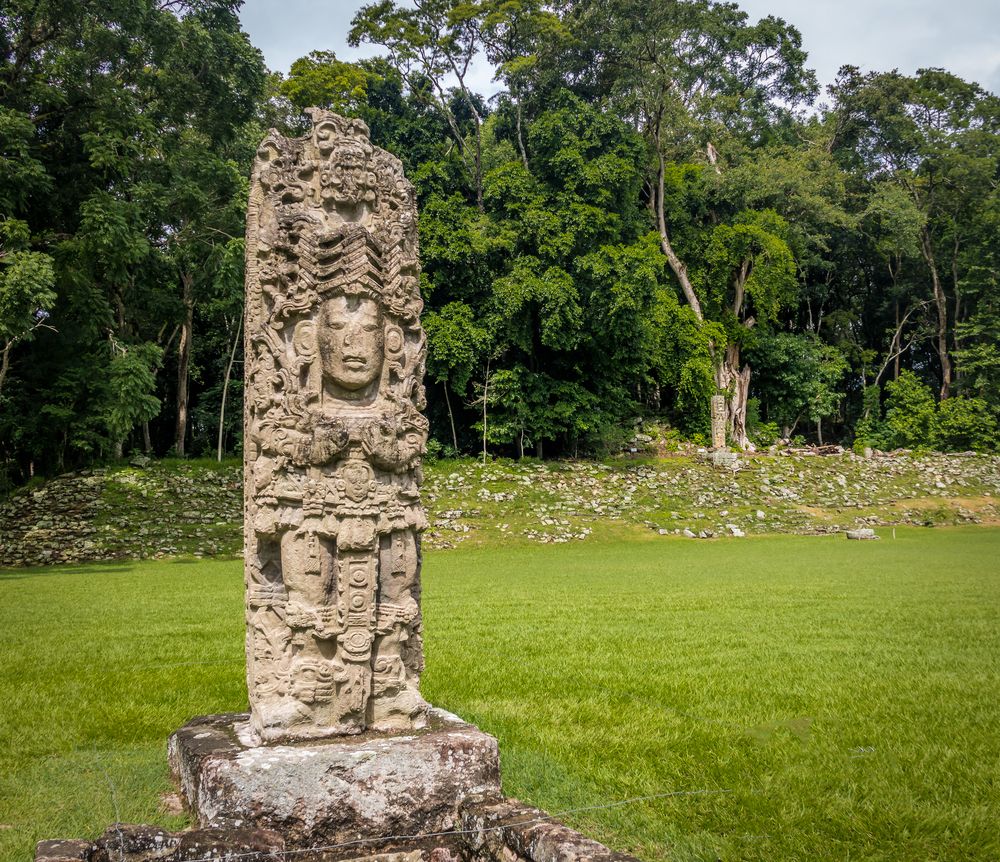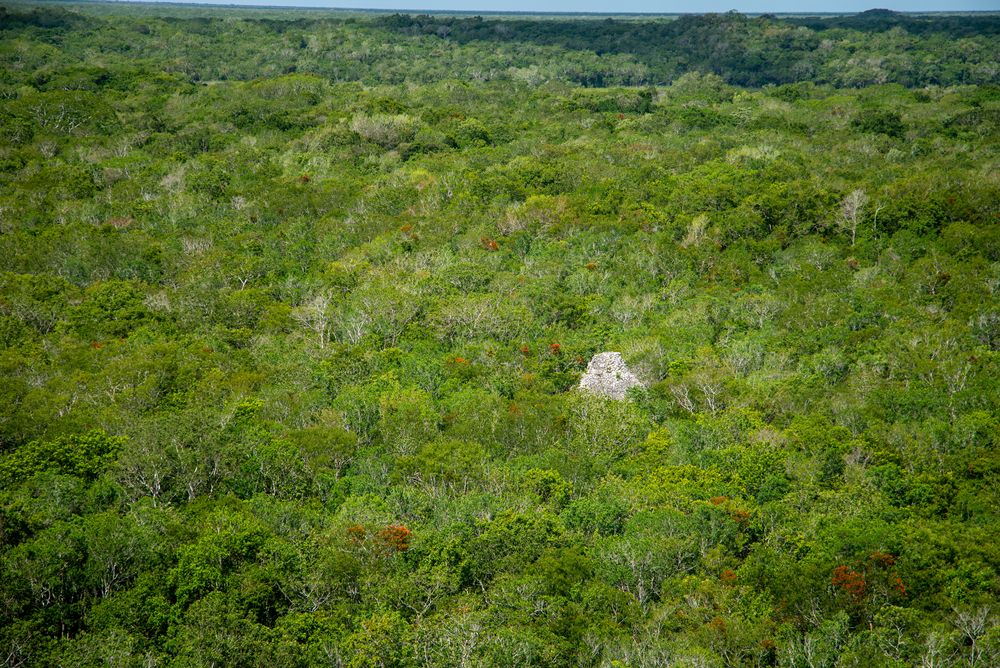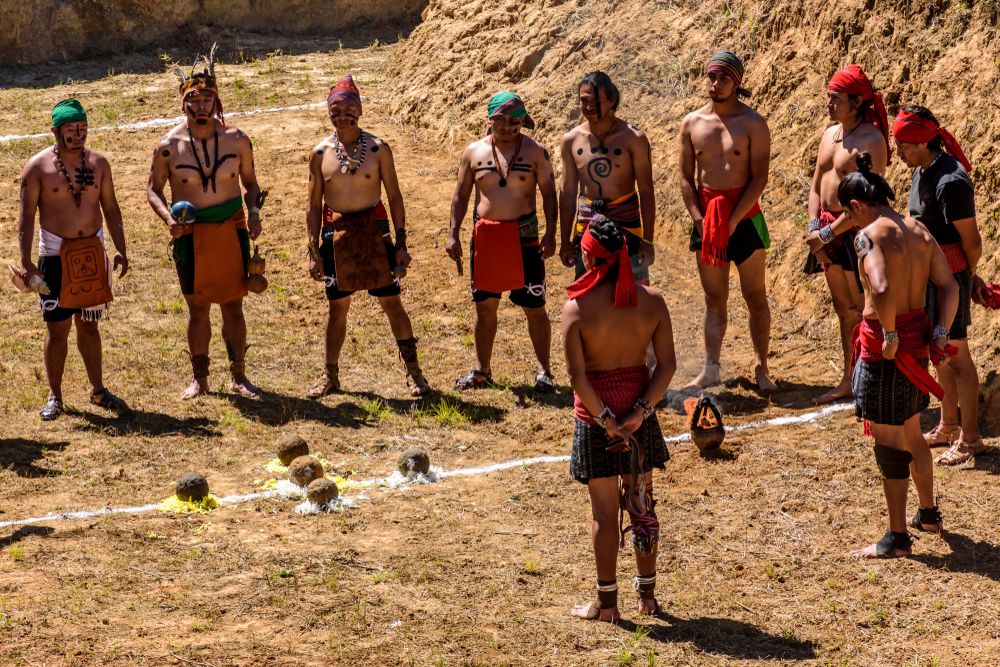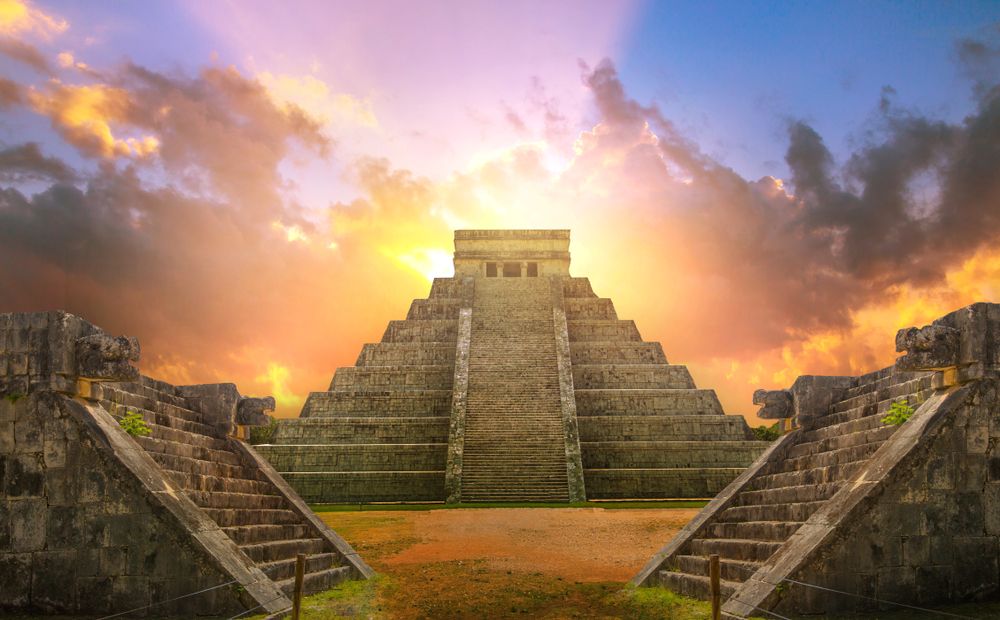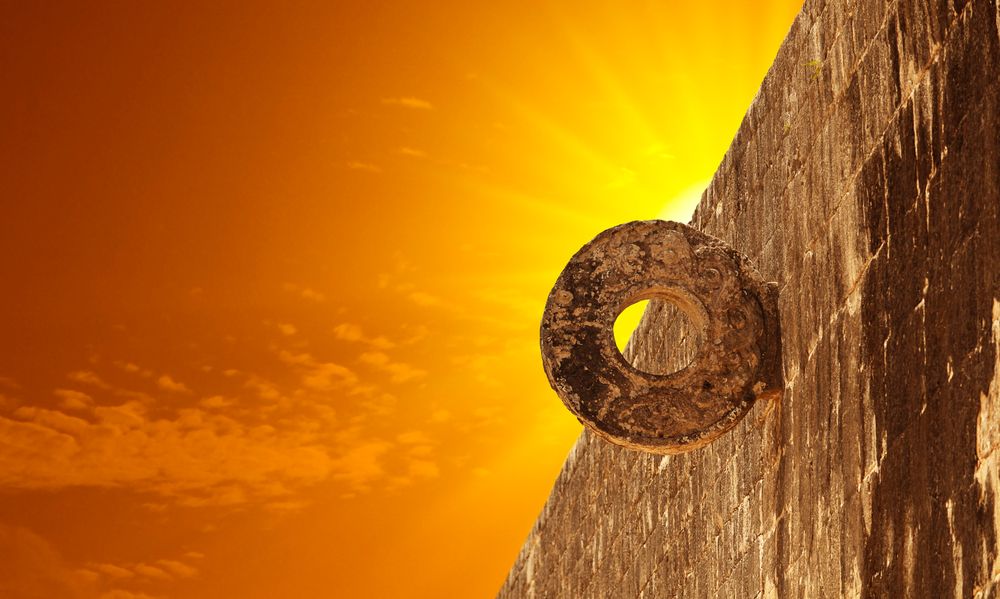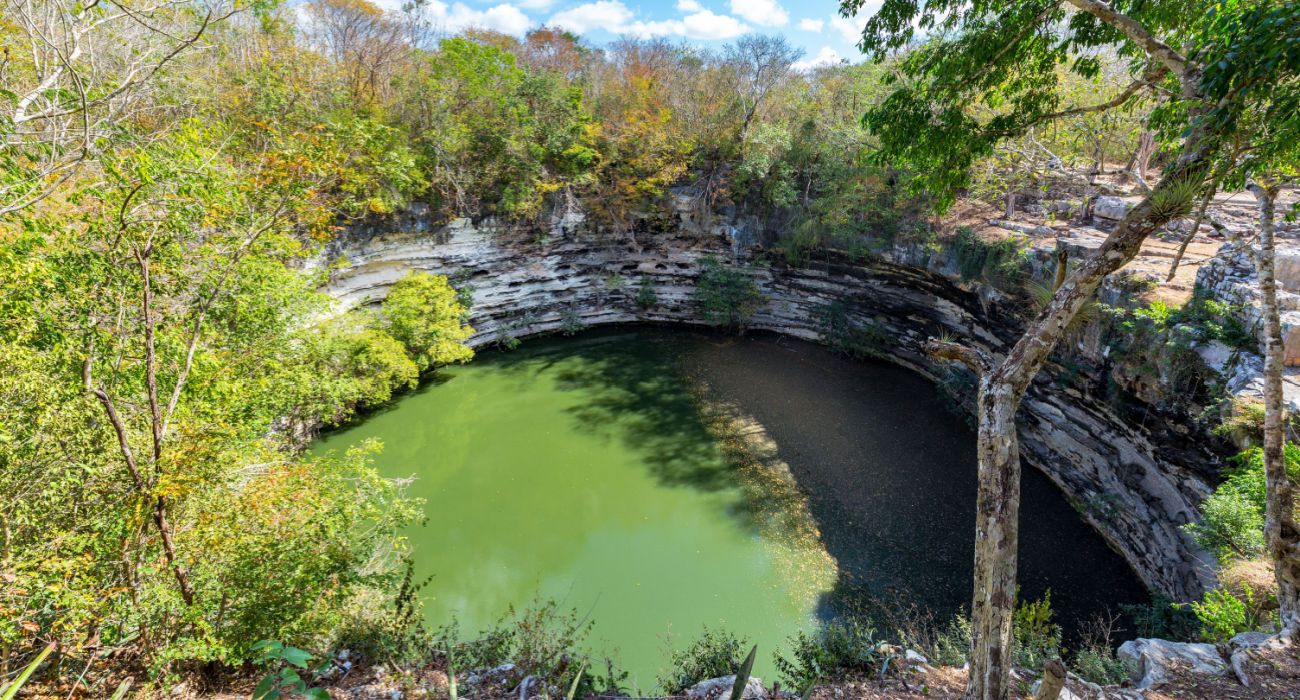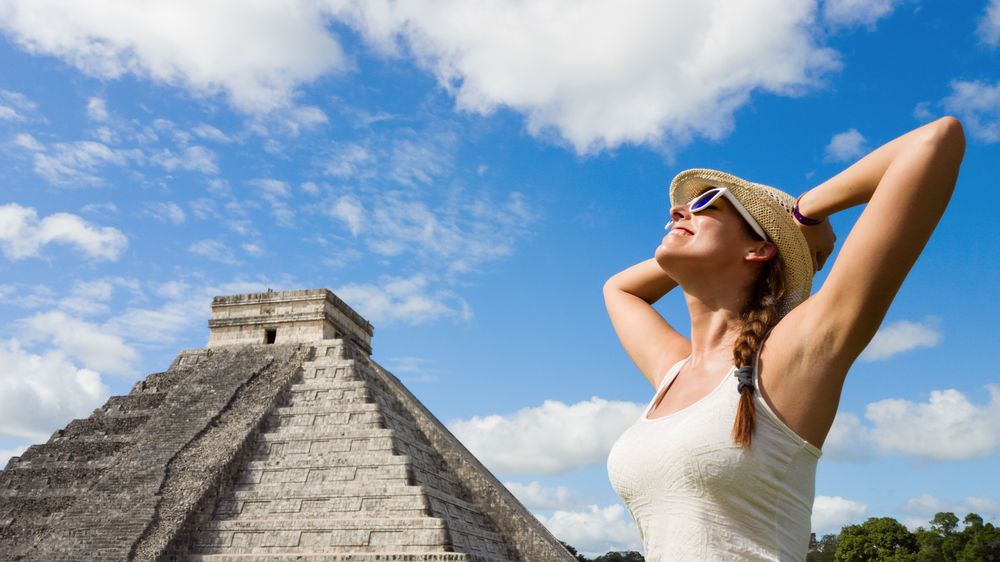Read update
- There Is Much More To Understand When Coming To See Chichen Itza
Summary
- Chichen Itza is a top cruise attraction, with many tourists visiting from nearby ports on organized tours.
- Local vendors sell goods near Chichen Itza, although tourists should be prepared for potential persistence.
- Chichen Itza was discovered twice and was used as an observatory by the Mayans. It is being restored and may have been used for sacrifices.
Chichen Itza is one of the Seven Wonders of the Modern World and is a historic site situated in Yucatán, Mexico. While most people realize that Chichen Itza was built by the Mayans thousands of years ago, there are many things tourists don't realize about this marvelous attraction. There are many interesting facts about Chichen Itza that everyone should know before visiting.
Chichen Itza refers to an archeological site, not the pyramid within it, which is the site's most popular tourist attraction. The pyramid itself was built to serve as a temple and a castle and is known as El Castillo - there are a lot more facts about Chichen Itza that you may want to know about both the site and the pyramid before you visit.
UPDATE: 2023/10/26 16:37 EST BY NOAH STAATS
There Is Much More To Understand When Coming To See Chichen Itza
This article has been updated with new information regarding Chichen Itza, as well as two lesser-known facts about this world-famous monument. Whether someone is coming from their cruise, shopping with locals, or wanting to learn more about this iconic structure, Mexico is filled to the brim with history and Mayan culture!
15 Chichen Itza Is One Of The Most Visited Cruise Attractions
- Cruise passengers account for much of the tourism at Chichen Itza.
Something to know about Chichen Itza in Mexico is that it brings most of its tourists from cruise ships porting in nearby areas. Cozumel is a landing point for many cruisers, with them hopping on a bus to witness the ancient Mayan structure in real-time. For this reason, people will almost always have the option of booking a tour of the site via their cruise company, as it's continuously one of the most in-demand choices among people coming to the country. From water to Chichen Itza!
Guachimontones is another prehistoric site in Mexico worth checking out for anyone with time to spare on the mainland.

The Longest Bike Trail In The World Spans All The Way From Canada To Mexico
The Great Divide Mountain Bike Route spans more than 3,000 miles and takes over a month to bike in its entirety.14 There Are Locals Selling Goods Near The Famous Monument
- Local vendors line the streets entering Chichen Itza.
Although this sometimes doesn't sit well with tourists, there are hoards of vendors selling goods just hundreds of feet from Chichen Itza. Most people are fairly calm about selling to tourists, although it has been reported vendors bombarding buses filled with guests in the area, as well as flagging them down at the monument. It's best to say no thanks and move on from the area if this persists. Or, if you want a handcrafted gift, then supporting vendors is a great idea: whatever makes everyone feel most comfortable.
13 It Was Discovered Twice
- Chichen Itza underwent two major discoveries, one in 514 AD and another in 1841.
One thing most people do not know about Chichen Itza is that it was discovered twice. In 514 AD, a priest by the name of Lakin Chan discovered the site that is known as Chichen Itza. It is believed that Chan was also referred to as Itzamna. Chichen Itza translates as “at the mouth of the well of the Itza.” Over the years following its abandonment, Chichen Itza was lost, and Mexico fell into turmoil and was ravaged by a series of wars. In 1841, American Explorer John Lloyd Stephens stumbled upon this site once again and turned it over to Mexico.
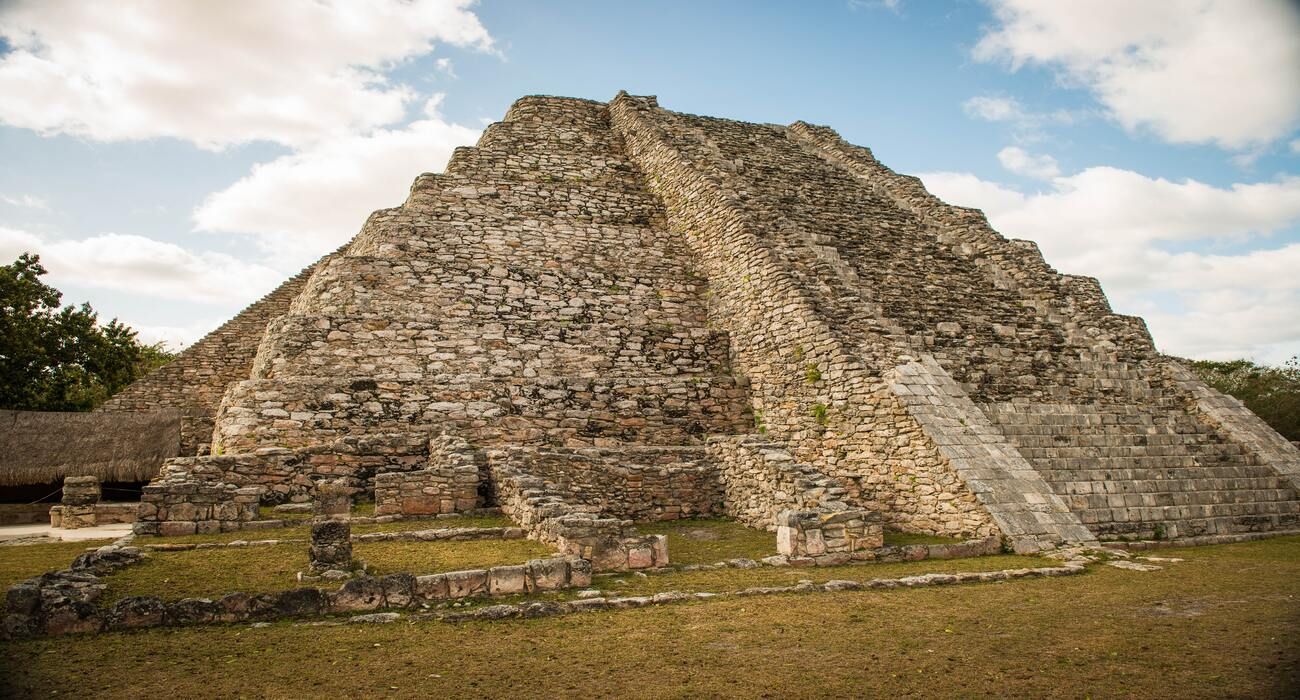
Mayapan: Visit One Of The Yucatan's Most Stunning But Rarely Visited Mayan Sites
Mayapan in Mexico is the forgotten last great city of the Maya and is very much worth visiting away from the crowds.12 It Was Used As An Observatory
- At one point, Chichen Itza was used as an observatory.
The Chichen Itza is a marvelous site due to its rich architecture and historical value, but it also houses evidence that the Mayans were definitely ahead of their time. For starters, the Chichen Itza housed craftspeople, artisans, and scholars and was by no means a civilization of simple people. The Mayans were people of science and math and especially excelled in the field of astronomy. For this reason, tourists can visit the Mayan observatory known as El Caracol, which once was used by the Mayans to gaze into the heavens and study the motions of Venus.
11 It's Built With Diverse Materials
- The pyramids of Chichen Itza have been made with local materials, such as mica.
The pyramids of Chichen Itza have been a popular attraction for ages, but now they are being questioned, or rather, the method in which they were built. Historians have analyzed the buildings and structures located within this site and have found a variety of diverse materials that do not originate locally in Yucatan, Mexico. One of these materials is mica, which was used by the Mayans during construction to insulate their buildings, but there is one problem. Mica is found 2,000 miles away from the pyramids in Brazil, and scientists are baffled as to how it was transported without vehicles.
10 It Was Built Near Sinkholes
- This structure was built near sinkholes, often believed to be used for human sacrifice.
Another thing most people do not know about Chichen Itza is that it was built near sinkholes. While your first reaction to reading that might be confusion or worry, there was a very good reason for the Mayans establishing their community near two sinkholes. The area is generally spotted with numerous sinkholes in the limestone earth and is stable. They actually provided the only source of freshwater to the people of the area as there are no rivers or lakes nearby. Therefore, Chichen Itza was built near two massive sinkholes to ensure water availability year-round. These sinkholes are called cenotes and have clean water in them (cenotes are also one of the top tourist attractions of the Yucatán Peninsula).
9 It Is Being Restored
- Many restoration projects have kept Chichen Itza looking beautiful after all these years.
One thing most people find surprising about the buildings in Chichen Itza, particularly El Castillo, is the incredible condition it is in after all these centuries. This is due to the restoration projects headed by the Mexican government and some universities to ensure these structures stand the test of time.
Restoration efforts began in 1923 when Sylvanus Morley, an archaeologist, headed an expedition to the pyramid and realized it had suffered a great deal of decay. After gaining entrance to the pyramid, restoration efforts were started and continue to this day; due to this, El Castillo is stronger than ever.
8 It May Have Been Used For Sacrifices
- Many believe that sinkholes surrounding Chichen Itza were used for sacrifices during times of heartache.
Next up on this list is a morbid fact about Chichen Itza, which is not entirely butterflies and rainbows. The Mayans were peaceful and smart people but also believed in curses and sacrifice to the gods they worshiped. The sinkholes mentioned above were frequently used for sacrifices during times of adversity, such as a drought or famine. The Mayans would choose a person to be sacrificed to the gods in hopes that this would bring them luck. In addition to sacrifices, the Mayans were also big fans of death penalties, which were gruesome and publicized to maintain order and spread fear.
7 It Isn't Entirely Mayan
- The Chichen Itza was built in two stages: the pre-Classic and the latter period.
Next up is a fact that startles most people when they hear it, and it truly is shocking. Historians suggest that this famous Mayan community may not have been entirely Mayan, and that is true. The Chechen Itza was built in two stages, the pre-Classic and the latter period. The pre-Classic period was greatly influenced by the Mayans, but following an invasion of Toltecs in the 10th century, this all changed. As a matter of fact, the most iconic buildings of Chichen Itza, such as the Temple Pyramid El Castillo, may have been built by the Toltecs and not the Mayans.
6 There Are Smaller Pyramids Within
- There is a smaller pyramid cluster hiding below the El Castillo.
Another fact to know about Chichen Itza is that while the huge pyramid of El Castillo looms at a whopping 98 feet, it is, in fact, hiding something beneath it. Within the pyramid are two smaller pyramids that stand at 65.5 feet and 33 feet. The smallest of the three pyramids is believed to have been built by the Mayans, as it features a unique Colombian-style architecture style. In contrast, the other pyramids have Mexican influences in them. Scientists are studying the smaller pyramid to learn more about the ways of the Mayans, as the ways of the Toltecs are shown on El Castillo with its carvings and sculptures.
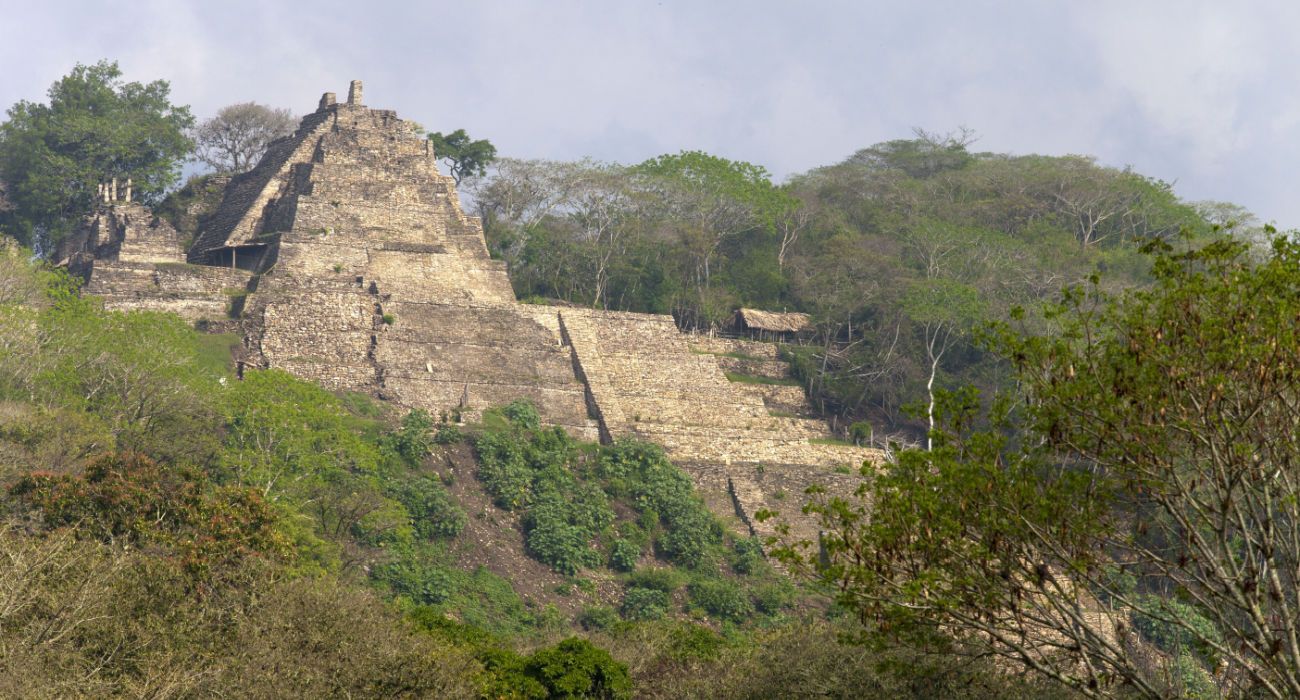
This Forgotten City Has The Tallest Mayan Pyramid (& Its Not Chichen Itza)
The Great Acropolis of Tonina in Mexico is possibly the tallest Mayan pyramid ever built, and it has a whole complex of structures to discover.5 There Was A Death At The Itza
- Tourists in modern times are not permitted to climb or even touch Chichen Itza.
Tourists at the Chichen Itza are frequently disappointed to know that they cannot climb to the top of the pyramid, and here is why. Until 2006, tourists were allowed to climb to the top of El Castillo to gaze upon the sculptures at the top. That was until an American tourist stumbled on her way down and fell to her death. These accidents are increasingly common, and for this reason, the steps of El Castillo are restricted. In addition to providing an added layer of safety to tourists, this ensures the structure will not be damaged by the feet of hundreds of thousands of tourists climbing the steps.
That said, this Mayan pyramid in Mexico DOES allow climbing, so that's something to think about.
4 Chichen Itza's Glory Declined Mysteriously
- The Mayans are said to have vanished sometime around the 14th century.
This once great empire met its sudden doom when the Mayans who once inhabited this land mysteriously left in the 14th century and never returned to it once again. The Chichen Itza was a symbol of perseverance and power to the Mayans, who had moved around, ravaged by warfare until settling in the Itza. Their civilization was one of the most advanced of its time. Still, it met its sudden end due to a series of issues, such as drought and famine. After the fall of Chichen Itza, the Mayans persevered in the North till the 16th century.
3 Chichen Itza Has The Largest Mayan Ballcourt
- Chichen Itza is home to the largest Ballcourt known in Mesoamerica.
Much is not known about the Mayan Ballgame, but it would seem that for the Mayans, the game was more ritual in nature. The game was associated with human sacrifice, and the exact rules remain unknown (except it would seem players could only use their hips and thighs. Chichen Itza is home to the largest Ballcourt known in Mesoamerica.
2 Chichen Itza Has A Sacrificial Cenote
- There is a sacred cenote at Chichen Itza, where sacrifices occur.
At Chichen Itza, visitors can find the Sacred Cenote. It is an ancient sinkhole that the Mayans believed was sacred. Numerous artifacts have been discovered at the bottom of this cenote, including things associated with sacrifice, like gold, jade, incense, and human bones. The human skeletons include warriors, children, and maidens. Also, at Chichen Itza, visitors can see the Mayan baths where sacrificial victims were ritually cleaned before their sacrifice.
1 Chichen Itza Is One Of The Most Touristic Mayan Sites
- Chichen Itza remains one of the most popular Mayan sites in the world.
Chichen Itza is not only one of the most popular archeological sites in Mexico, but it is also likely the most popular Mayan archeological site in all of the ancient Mayan world. It is far from the only ancient Mayan city to have impressive ruins. Still, it is one of the most accessible and best known, and it benefits from being in Mexico (Tikal is remote in the jungle in Guatemala). Chichen Itza attracts around 2 million tourists every year.

